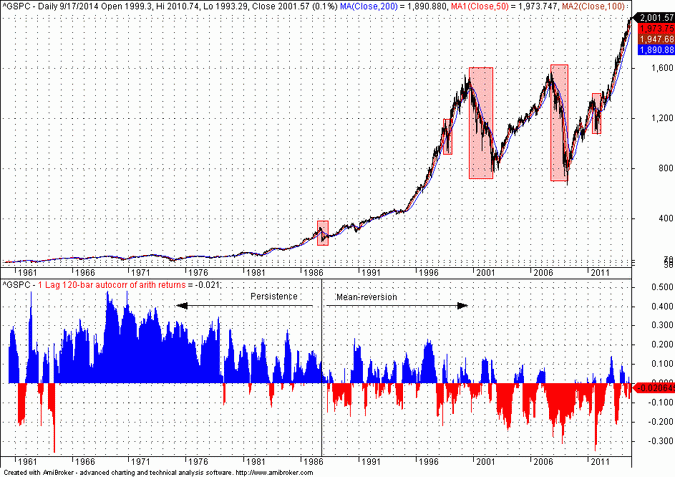A popular science interpretation of Borel’s Law is that phenomena with very low probabilities do not occur. Given that the rally in stocks has lasted for more than 5 years and the Fed promise to keep interest rates low for a long time, many investors think that a large correction has extremely low probability and it will not occur, according to Borel’s law. However, this interpretation of Borel’s law is wrong.
The mathematical version of Borel’s Law states that under identical conditions, the proportions of time that a specific event occurs in a repeated experiment will tend to its probability of occurrence as the number of trials becomes very large. Thus, if a fair coin is tossed many times, the proportion of heads will be close to 0.50, the probability of heads in any one identical toss.
However, there is also a popular science interpretation of Borel’s Law based on some book this great scientist wrote and states that phenomena with law probabilities do not occur. But is the probability of a drop in S&P 500 index of 50% from these levels extremely small? That is hard to answer when the distribution of such event is unknown and it is certainly unknown or does not exist at all.
Given that in the last 30 years there were 5 significant corrections, as shown on the chart below, the 1987 crash, the 1998 Ruble crisis, the 2000 and 2007 bear markets and the 2011 decline, it appears that practically at least the probability of a large correction is not very low:

But if we take a closer look at the above chart, we can see how the dynamics of the market have changed dramatically after the 1987 crash or about. Notice how the autocorrelation of returns has turned from positive to negative and persistence in price actions has turned to a mean-reversion tendency. In simpler but maybe not too precise words, before 1987 up days were followed by up days with high probability but after 1987, down days are followed by down days with high probability. Hence the two protracted bear markets due to the dot-com and financial crisis.
What the Fed is doing is essentially counter-balancing for the negative autocorrelation, creating a persisting cause in a mean-reverting market. This is because, in general, causes of corrections are sufficient but not necessary. So the Fed knows that this market can enter a bear phase at any moment and it makes it persistent through low interest rates. Actually, Borel’s Law does not apply here because in reality without Fed intervention this market would have entered a bear phase with high probability.
As far as causes of corrections, the IMF in a recent report mentioned geopolitical tensions as a possible cause of a market decline and warned against taking excessive risks, especially against borrowing to invest in stocks. Well, I have been saying this for several months in my Marker Recaps but the IMF just realized that the situation in Ukraine poses a geopolitical risk.
A cause of a correction could make things a lot worse. The Fed knows that and it is unlikely that it will raise rates unless it is prepared to see a serious correction in stocks and the resulting unemployment. Thus, the remaining risk is geopolitical. It is unlikely that Middle East tensions and events there could cause a severe market correction. But events in Eastern Europe could and the game is quite involved there. Some think that the US has pulled Europe into this but I think that it is the other way around and Europe tries to play geopolitical games, dragging America into this. Maybe America should let Europeans who have started both World Wars to resolve this amongst themselves because the risk of a geopolitical event is high. If America pulls out, the risks will be contained in Europe. America could help by selling natural gas and crude oil to Europeans in case their supplies get cut off but maybe it is not wise to get involved in their power game because Europeans have been reckless before and Americans paid that with blood and money. For some reasons, Europeans always think that Americans are willing to risk their lives for them. They should get a message before they get too reckless like in the past.
To summarize, Borel’s law of low probabilities does not apply in the stock market at this point and investors should not rely on it to borrow and buy stocks as there is the potential of a cause of a bear market plus a possibility that low interest rates may not suffice in the near future to support prices due to the negative autocorrelation. Therefore, the probability of a correction like in 2000 or 2007 is not very low but actually high (subjectively around 10%). Thus, it may be wise to avoid buying stock on margin and exercise proper risk and money management.
You can subscribe here to notifications of new posts by email.
Disclosure: no relevant positions.
Charting program: Amibroker
Disclaimer






